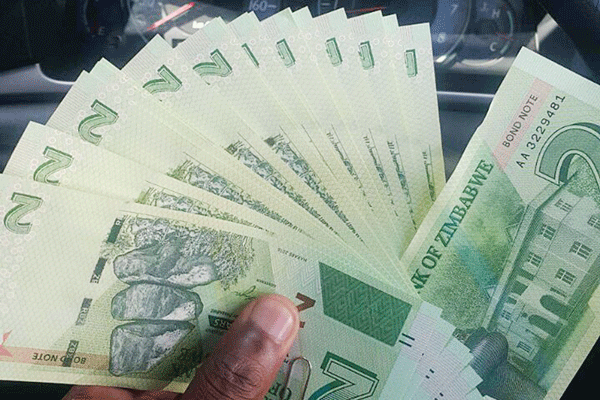
The cash crisis in Zimbabwe appears to have eased with queues disappearing at most banks while some supermarkets are offering cash-backs even without being asked.
BY NDAMU SANDU
The seeming return to normalcy has been attributed to a reported low demand for cash and increased confidence in bond notes.
A survey by Standardbusiness last week showed that queues had disappeared at several banks in the capital Harare, while automated teller machines (ATMs) were also dispensing cash. The ATM cash limit at most banks ranges between $50 and $100 dispensed in either dollars or bond notes.
Some banks, like POSB and Steward Bank, however, still had long queues of people waiting to withdraw cash. At the height of the cash crisis last month, a few banks were dispensing money through the ATMs.
Our survey found that retail shops such as Choppies and Food World that had suspended the cash-back facility had restored the service. They join OK, TM Pick n Pay and Cell Services, among others in offering the cash back facility.
An economist with a leading commercial bank said the disappearance of the cash queues was a result of a combination of factors that include increased confidence in bond notes and low demand for cash after the festive season.
- Chamisa under fire over US$120K donation
- Mavhunga puts DeMbare into Chibuku quarterfinals
- Pension funds bet on Cabora Bassa oilfields
- Councils defy govt fire tender directive
Keep Reading
“We are in the off-peak period after coming from the Christmas holiday. January is usually a month in which demand is low. People have already paid the school fees for the first term,” the economist said.
He said some of the panic withdrawals experienced last year were to do with the low confidence people had in bond notes.
The bond notes were introduced in November under a $200 million export incentive facility guaranteed by the African Export-Import Bank. There were sceptics who feared the bond notes would drive the economy into that frightful hyperinflationary era of 2007/2008.
“The Reserve Bank has managed the situation well by making sure bond notes are limited in terms of circulation to support basic transactions. That has cultivated the confidence. Panic was also driven by speculative tendencies as people feared the bond notes would drag the country back to hyperinflation,” the economist said, adding that the introduction of only the small $2 note had killed the appetite for unscrupulous individuals to come up with fake bond notes.
As at December 31, $72,9 million worth of bond notes were in circulation up from $12 million when the surrogate currency was introduced on November 28.
Economist Prosper Chitambara said the easing of the cash shortages had to do with the increased uptake in the use of plastic money. He said the increase in the bond notes in circulation was another factor.
“Market reception towards bond notes has been positive and it reduced pressure on US$ cash holding,” Chitambara said.
A banker told Standardbusiness last week that what was needed was to increase production in order to be able to generate more export receipts for the economy.
“It would be sad to have a good rainy season and we don’t put it to good use in terms of agriculture. It is incumbent on the authorities to ensure that we keep our eyes on the ball in terms of production,” the banker said.
However, critics say this could be a false calm before a storm.
“It happened in Germany after World War One. In Germany due to the massive uncertainty caused by the WWI, people started “saving” currency by keeping money at home. Despite the Bundesbank pumping in cash, people would withdraw and keep the money at home. So inflation didn’t immediately hit them. When people started spending their hordes of cash, the wheels then came off,” a banker said on Friday.
“The traders may also not have been banking. Most of this cash is actually bond notes in my view. My take is that the dollar will continue to leak from the system. Bond notes will continue to take over. This may be the false calm before a storm. The tsunami is surely coming.”












